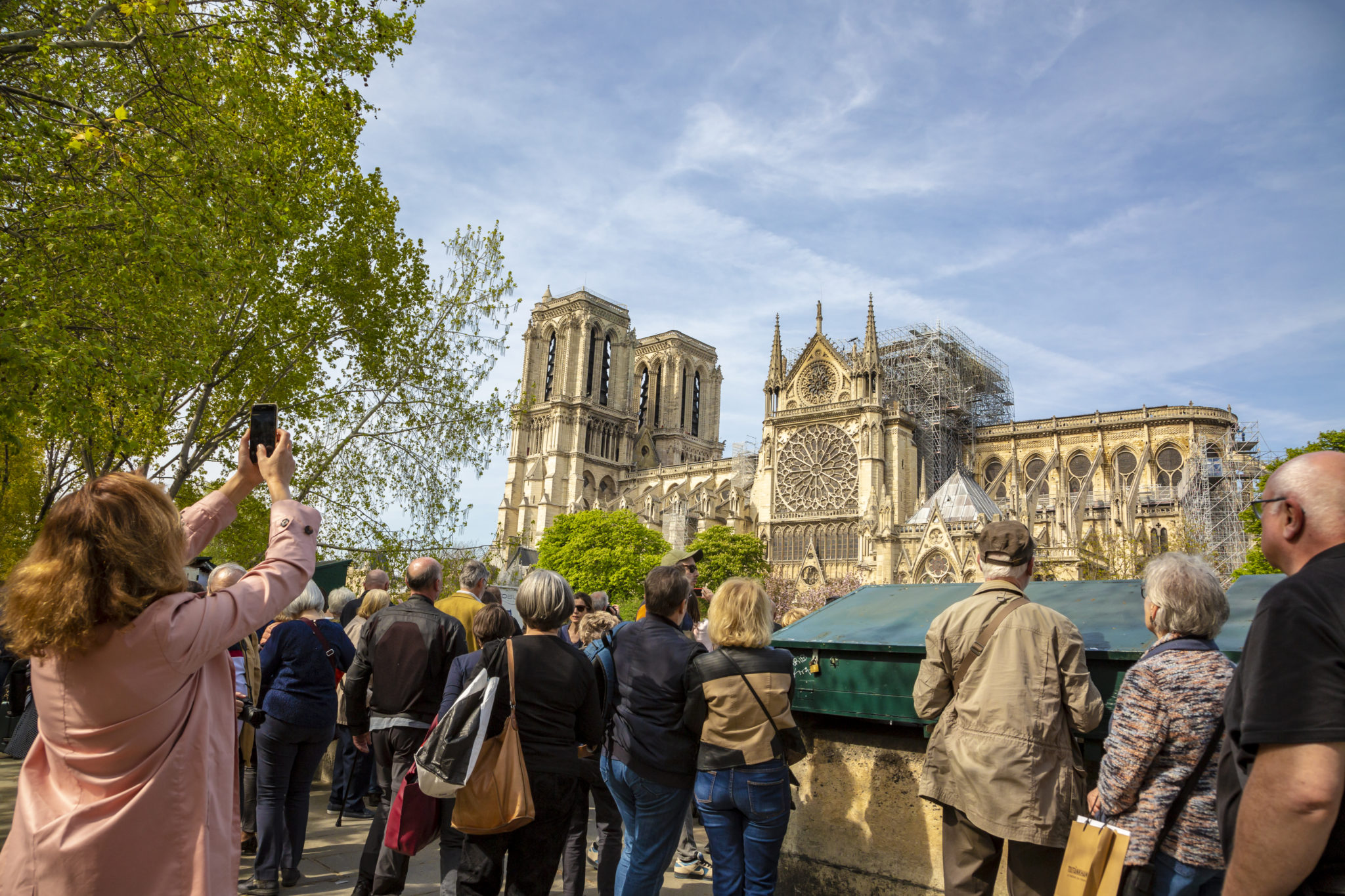

The world mourned on April 15 when flames ripped through parts of the Notre Dame Cathedral in Paris. As firefighters did their best to contain the blaze, a solemn crowd gathered around the beloved 850-year-old structure, singing hymns and reciting prayers into the night.
Ultimately the fire destroyed the cathedral’s spire, which reached a height of 300 feet, and roof, with considerable damage to the upper walls. But the interior, including the two pipe organs and most of the religious relics and pieces of artwork, was largely undamaged. While the fire resulted in three injuries, thankfully there were no deaths.
About two weeks later, the New York Times reported that investigators were focusing on two theories behind the fire’s cause: a short-circuit of electrical installations near the spire, or cigarette butts dropped onto scaffolding by renovation workers. Other reports state that fire safety precautions were in place at the time, with alarms checked daily by monitors, but the detection system didn’t include sprinklers or fire-breaking walls.
Protecting historic buildings from fire is a challenge. According to Robert Solomon of the National Fire Protection Association (NFPA), there’s a general reluctance to implement modern fire protection systems in beloved old structures due to “concern over what people might view as the impact on the historic fabric or historic integrity of the building.”
“They may imagine pipes and wires and conduit running across architecturally significant ceilings and walls,” he says. “In other words, they are concerned about the visual appeal, or lack of appeal, of systems.”
Finances can also present hurdles. He notes that a lot of historic buildings, many of them churches, do not have the funding available to make improvements and upgrades.
“It puts the trustees or caretakers of the property in a difficult situation as they try to allocate funds for the everyday expenses versus the longer-term capital upgrades and improvements,” he says.
Another concern, and common misconception, is that damage from sprinklers would be more significant than damage caused by a fire.
“If you just take a look at some of the recent fires in historically significant buildings and museums, there is a zero percent chance of recovery from any content or architectural feature that was consumed by the fire,” Solomon says. “Any components, elements or other contents that are impacted by the discharge of the automatic sprinkler system have a very high probability of being able to be refurbished and salvaged.”
He goes on to point out that it is still widely believed that if one sprinkler is activated, every sprinkler in the building automatically discharges — that is patently false, and a myth that the NFPA continuously battles against.
Fire protection experts have gotten creative in recent years, though, retrofitting innovative and novel sprinkler systems into older structures. For example, Solomon says copper seems to be accepted as a less obstructive material if piping has to be exposed. Systems can also include recessed sprinkler heads with cover plates that match the ceiling background, thus helping to camouflage the system’s ceiling components.
Another option that has recently gained in popularity is implementing a water mist system, which typically uses piping that’s smaller in diameter, minimizing its impact on architectural features. As part of a comprehensive restoration in 2014, such a system was installed inside the 100-year-old St. Peter’s Cathedral in Manhattan. Officials seem to agree that while water mist isn’t as effective as traditional sprinkler systems, it’s a reasonable compromise when maintaining a structure’s historic integrity is a priority. Whether that type of upgrade could have suppressed the fire and prevented the damage at Notre Dame is unclear.
“It is very difficult to tell what impact any type of fire protection system would have had at Notre Dame at this point in time,” he says. “The impact of the construction renovation work, scaffolding, presence of materials from the renovation work that are not normally on-site, the response time by the fire department, and many other factors will have to be analyzed on a case-by-case basis, and then most likely integrated to get the bigger picture.”
Solomon adds that regardless of detection and suppression systems available for a structure, working to minimize potential ignition sources should always be a priority. Upgrading a building’s heating and electrical systems, for example, can help lower the risk of ignition. In houses of worship where candles are still used for religious purposes, flameless battery-operated candles might be considered as a good substitute. And if cooking facilities are in the building, he says the equipment should always be properly maintained and cleaned.
The NFPA will continue to follow the investigation into what caused the fire at Notre Dame, along with the forthcoming renovations and any fire protection upgrades.

